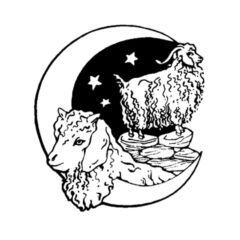Tues, May 2
The sky is blue! Off we head to the Bay of Skaill for a bit of beach combing. The water near land is a bright turquoise, farther out a deep ultramarine blue. The gulls swoop and skim the water as we walk along the sand until we are just below the cliff where Skara Brae lies above us.There are some enticing rocks but none that compel me to carry them back to the car. I’m waiting for Waulkmill Bay for that.
After some debate we decide to go to Skara Brae as we are so close. We buy our tickets, then have tea and scones in the little restaurant before going through the museum then out to the neolithic village itself. While burial mounds and cairns, stone rings and henges are fairly common worldwide, there are very few instances of residences from five thousand years ago and this place, a world heritage site, is probably the best preserved and most extensive.There are eight “houses” and two other spaces, workshops perhaps, linked by passages. Once these houses most likely would have been roofed over with skins or thatching. Because there was so little wood available on these islands after farming became the way of life, stone sites here in Orkney were preserved. At Skara Brae the structures were buried under dunes for more than forty centuries until a storm in 1850 uncovered them.
Remarkably the houses, constructed of unmortared stones, do not differ greatly from the two and three century old farm museums we have visited. Stone cupboards, dressers, beds, water tanks and a central hearth are the common motif. It is believed this was a community of about 75 to 90 people. Although it has been removed now, the village was originally surrounded and cocooned within its own midden heaps, both to protect the villagers from the weather–that incessant wind!–and to hide them from any marauding bands of enemies. Skara Brae was inhabited for 600 to 1000 years!
https://www.orkneyjar.com/history/skarabrae/skarab2.htm
We leave the village and walk up to the nearby Skaill House, home of the Graham family since 1620. The seventh laird, William Graham Watt, discovered the ruins of Skara Brae after that storm of 1850 and undertook the first excavations.
We head back to Stromness, still exclaiming over all the tiny lambs and their mothers in every field we pass. I have forgotten to mention, but this trip, because we have arrived two weeks earlier, right after lambing, we see that many of the babies are sporting little biodegradable poly jackets which disappear after a couple of weeks but which keep the newborn lambs dry. There are no sheds or even protecting trees for the animals to shelter under.
We have our BLTs–will we ever tire of them–and I and (I think) Jill, spend the rest of the afternoon knitting. The others go for a walk up to Brinkie’s Brae.
This is from the official Stromness website:
From the top of Brinkie’s Brae and along the western coastline there are spectacular vistas across to Graemsay and Hoy. It is quite unlike any other town in Orkney, partly because its geology is so unusual.
 Brinkie’s Brae is formed from granite-schist, unlike the fine-grained sedimentary rocks of the surrounding area. This is one of the only places in Orkney where rocks like these, more characteristic of the western Highlands, are exposed.
Brinkie’s Brae is formed from granite-schist, unlike the fine-grained sedimentary rocks of the surrounding area. This is one of the only places in Orkney where rocks like these, more characteristic of the western Highlands, are exposed.
Jill and Jen make dinner: lamb chops from Dounby, steamed new potatoes in herbs and butter, salad and Orkney ice cream. After dinner we drive to the Orkney Folklore and Storytelling Centre where we hear Lynn O’Brien Barbour tell stories of selkies and finmen as she sits by a peat fire in her traditional Orkney chair . It’s another magical evening.
https://www.orkneystorytelling.com/peatfire-tales/
We decide we will want to hear her again, next time at the Stromness Hotel in the Whisky Bar.




















































